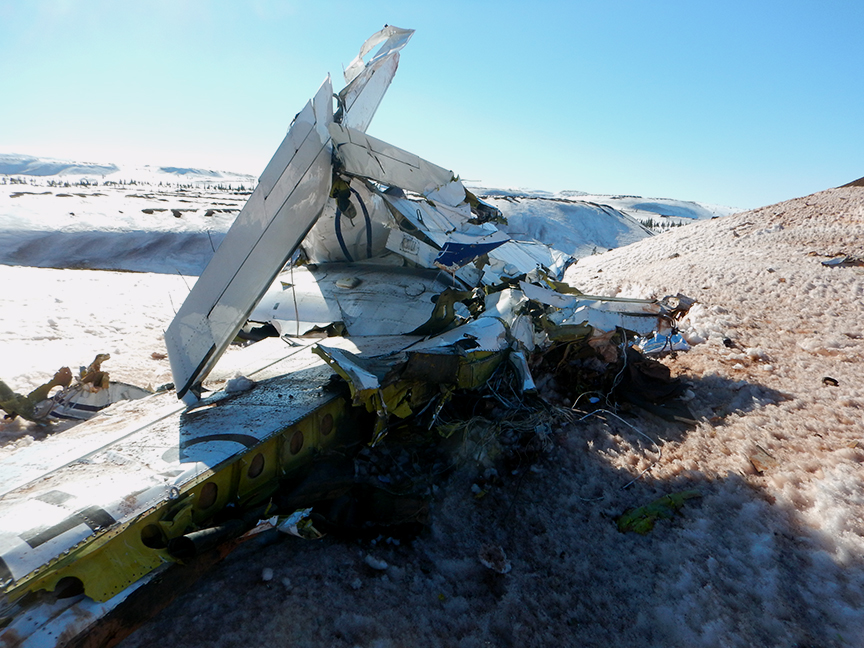Collision with wires
Exact Air Inc.
Piper PA-31, C-FQQB
Schefferville Airport, Quebec, 3.5 nm NW
The occurrence
The Piper PA-31 (registration C-FQQB, serial number 31-310) operated by Exact Air Inc., with 2 pilots on board, was conducting its 2nd magnetometric survey flight of the day, from Schefferville Airport, Quebec, under visual flight rules. At 1336 Eastern Daylight Time, the aircraft took off and began flying toward the survey area located 90 nautical miles northwest of the airport. After completing the magnetometric survey work at 300 feet above ground level, the aircraft began the return flight segment to Schefferville Airport. At that time, the aircraft descended and flew over the terrain at an altitude varying between 100 and 40 feet above ground level. At 1756, while the aircraft was flying over railway tracks, it struck power transmission line conductor cables and crashed on top of a mine tailings deposit about 3.5 nautical miles northwest of Schefferville Airport. Both occupants were fatally injured. The accident occurred during daylight hours. Following the impact, there was no fire, and no emergency locator transmitter signal was captured.
Media materials
News release
2017 fatal aircraft accident near Schefferville Airport, Quebec, highlights the risks of low-altitude flying
Read the news release
Deployment notice
TSB deploys a team of investigators to an aircraft accident site north of Schefferville, Quebec
Dorval, Quebec, 1 May 2017 - The Transportation Safety Board of Canada (TSB) is deploying a team of investigators to an aircraft accident site north of Schefferville, Quebec. The TSB will gather information and assess the occurrence.
Investigation information
Download high-resolution photos from the TSB Flickr page.
Class of investigation
This is a class 3 investigation. These investigations analyze a small number of safety issues, and may result in recommendations. Class 3 investigations are generally completed within 450 days. For more information, see the Policy on Occurrence Classification.
TSB investigation process
There are 3 phases to a TSB investigation
- Field phase: a team of investigators examines the occurrence site and wreckage, interviews witnesses and collects pertinent information.
- Examination and analysis phase: the TSB reviews pertinent records, tests components of the wreckage in the lab, determines the sequence of events and identifies safety deficiencies. When safety deficiencies are suspected or confirmed, the TSB advises the appropriate authority without waiting until publication of the final report.
- Report phase: a confidential draft report is approved by the Board and sent to persons and corporations who are directly concerned by the report. They then have the opportunity to dispute or correct information they believe to be incorrect. The Board considers all representations before approving the final report, which is subsequently released to the public.
For more information, see our Investigation process page.
The TSB is an independent agency that investigates air, marine, pipeline, and rail transportation occurrences. Its sole aim is the advancement of transportation safety. It is not the function of the Board to assign fault or determine civil or criminal liability.
